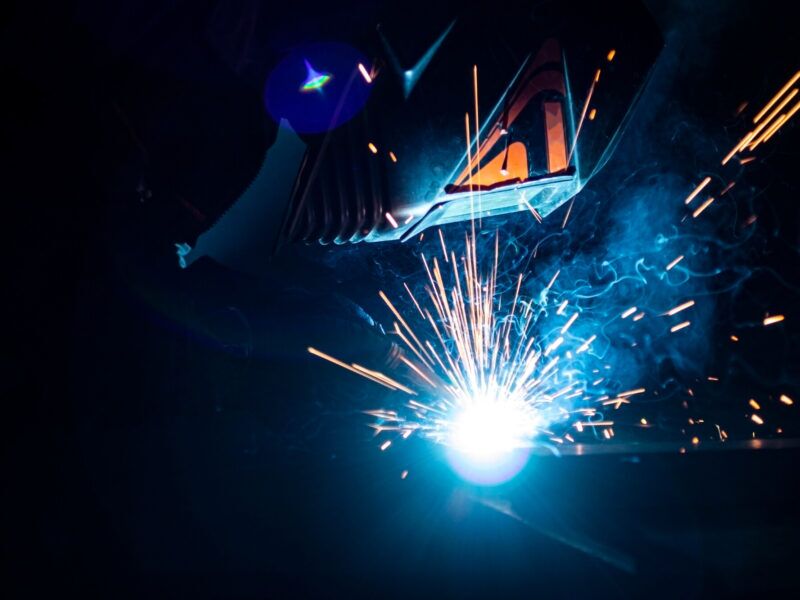Step-by-Step Overview to Preventing Weld Undercut in Different Metals
Necessary Tips for Welders: Protecting Against Undercut Welding and Ensuring Stronger Weld Joints
In the world of welding, accomplishing durable and solid weld joints is the keystone of creating top notch work. One common obstacle that welders usually run into is undercut welding, which can endanger the stability of the weld joint.

Recognizing Undercut Welding
Undercut welding is a typical welding defect that happens when the weld steel stops working to properly fill up the groove and causes a groove-like depression along the weld grain. This defect deteriorates the weld joint, making it susceptible to splitting and failure under anxiety. Damaging can be brought on by different factors, including too much welding current, high welding speed, inappropriate electrode angle, incorrect electrode size, and bad welding strategy.
One of the primary factors for undercut welding is an imbalance in between the welding current and the welding rate. If the welding current is expensive or the welding rate is too quick, the weld metal might not adequately fill the groove, causing damaging. In addition, using an electrode that is too large can lead to a similar result, as the excess steel can not effectively move into the groove.
To avoid undercut welding, welders ought to ensure they are utilizing the right welding criteria, keep an ideal electrode angle, pick the ideal electrode dimension, and technique proper welding strategies. By addressing these elements, welders can reduce the danger of undercutting and create stronger, more dependable weld joints.
Proper Welding Technique
Reliable welding method plays a vital duty in making sure the high quality and integrity of weld joints. One basic aspect of correct welding strategy is preserving the appropriate angle and distance in between the welding gun and the work surface.
In addition, a constant and steady hand motion is necessary for developing strong and sturdy weld joints. Welders must go for smooth, consistent motions to guarantee also circulation of the weld material. Proper manipulation of the welding weapon and filler product is additionally vital to accomplishing optimal penetration and fusion.
Moreover, managing the heat input and selecting the ideal welding specifications based on the material being bonded are crucial consider attaining high-quality welds - Preventing weld undercut. Welders need to comply with the suggested setups provided by welding treatment specifications and change them as required based upon the specific requirements of the job. By understanding proper welding techniques, welders can significantly improve the toughness and reliability of their weld joints
Choosing the Right Electrode
When considering the significance of selecting the ideal electrode in welding applications,Keeping the proper angle and range in between the welding weapon and the work surface is fundamental. The choice of electrode plays a vital duty in determining the quality and strength of the weld joint. Electrodes come in various types, each developed for particular functions and materials.
First of all, choosing the suitable electrode diameter is vital. Thinner electrodes are appropriate for welding thin materials, while thicker electrodes are better for thicker materials and higher warmth applications. Matching the electrode diameter to the thickness of the work surface aids attain a go to my blog well balanced weld.
Second of all, recognizing the product make-up of the electrode is crucial. Various electrodes are created for welding certain materials like steel, stainless steel, aluminum, or cast iron. Using the correct electrode product makes certain excellent blend and lessens the threat of issues in the weld.
Lastly, taking into consideration the welding position and technique is important when selecting the electrode type. For instance, specific electrodes are much better fit for above or vertical welding positions, while others function well for flat or horizontal positions. Selecting the right electrode based upon the welding technique boosts the general weld quality and stability.
Preparing the Base Metal
To guarantee an effective welding procedure, what initial steps should be taken when preparing the base steel for welding? In addition, any existing weld material or deposit from previous welding need to be removed to guarantee a tidy surface area for the brand-new weld.

Conducting Post-Weld Inspections

After conducting these assessments, welders need to compare the results versus sector criteria and job requirements to make certain that the weld joint satisfies all required requirements. Any kind of insufficiencies or inconsistencies found throughout the post-weld examination ought to be promptly addressed through ideal corrective steps to assure the weld's stability. By faithfully carrying out post-weld inspections and promptly addressing any type of concerns, welders can support the quality and reliability of their job, ultimately adding to the safety and long life of the welded frameworks.
Conclusion

In conclusion, protecting against undercut welding and guaranteeing more powerful weld joints call for a combination of proper welding strategy, picking the appropriate electrode, preparing the base steel properly, and performing post-weld evaluations. By understanding the root causes of undercut welding and carrying out the essential safety measures, welders can create high-grade weld joints that fulfill market criteria and ensure the structural honesty of the bonded elements.
Undercut welding is a typical welding defect that takes place when the weld metal falls short to appropriately load the groove and results in a groove-like clinical depression along the weld bead (Preventing weld undercut). Undercutting can be caused by different aspects, consisting of extreme welding existing, high welding rate, incorrect electrode angle, incorrect electrode dimension, and inadequate welding method
One of the major factors for undercut welding is a discrepancy between the welding current and the welding rate. If the welding current is as well high or the welding rate is more info here as well quick, the weld metal might not adequately fill up the groove, leading to undercutting.Keeping the appropriate angle and distance between the welding gun and the workpiece is fundamental when considering the significance of picking the appropriate electrode in welding applications.